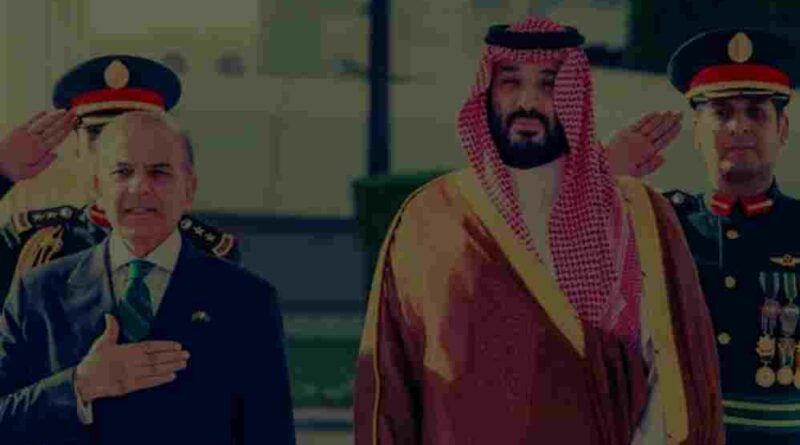Saudi-Pakistan Defence Pact: A Strategic Move That Caught Washington Off Guard
In a development that is reshaping conversations in global security circles, Saudi Arabia and Pakistan have finalized a defence pact that highlights deepening ties between the two long-time partners. What makes this agreement especially notable is not only the nature of the deal itself but also the way it was handled—kept under wraps until the very last moment, even from former U.S. President Donald Trump’s administration.
The Agreement at a Glance
The pact is being described as a mutual defence framework, where both nations have agreed to extend security assurances and military cooperation to one another. While specific details have not been made public, it is understood that the partnership will involve joint military planning, intelligence coordination, and possibly shared defence infrastructure in the future.
Saudi Arabia, historically dependent on U.S. support for its security architecture, seems to be sending a clear signal that it is ready to broaden its alliances and diversify its defence strategies. For Pakistan, the agreement offers reassurance of stronger backing from a powerful Gulf ally in an increasingly unstable regional environment.
Why the Secrecy Matters
The most striking part of this pact is not the pact itself but how it was managed. Reports suggest that Crown Prince Mohammed bin Salman deliberately avoided informing Washington until the agreement was essentially complete.
This decision carries weight for several reasons:
- Assertion of Independence: Riyadh’s choice shows a growing confidence in pursuing security policies without prior consultation with Washington.
- Diplomatic Signaling: By unveiling the pact on its own terms, Saudi Arabia demonstrated that it is willing to take steps that may not always align neatly with U.S. preferences.
- Strategic Surprise: The U.S. has long viewed itself as central to Gulf security. Learning about such an agreement at the last moment underscores a changing dynamic in that relationship.
What It Means for Pakistan
For Pakistan, this pact strengthens its already deep relationship with Saudi Arabia. Historically, Riyadh has been one of Islamabad’s most dependable partners, providing both financial aid and political support. The defence element now adds another layer to that relationship.
It could also give Pakistan a stronger security umbrella as it navigates a complex neighborhood that includes tensions with India, an evolving situation in Afghanistan, and broader concerns about extremism.
At the same time, this deal may allow Islamabad to balance its traditional reliance on both China and the United States by deepening military cooperation with the Gulf.
What It Means for Saudi Arabia
For Saudi Arabia, the move represents a step toward strategic autonomy. The Kingdom has, for decades, relied heavily on U.S. defence guarantees. But with shifting priorities in Washington and increasing instability across the Middle East, Riyadh appears to be charting a more independent course.
By tying up with Pakistan, which has one of the largest standing armies in the world and significant defence capabilities, Saudi Arabia is bolstering its own security framework without waiting for Washington’s approval.
This is also a message to regional rivals, particularly Iran, that Saudi Arabia is capable of building robust alliances that extend beyond traditional U.S. backing.
What It Means for the United States
For Washington, being kept in the dark is more than a matter of pride. It raises questions about the reliability of old alliances. The U.S. has been a cornerstone of Gulf defence for decades, maintaining military bases, selling advanced weaponry, and providing intelligence support.
If key allies like Saudi Arabia begin to make major defence moves without informing the U.S. in advance, it could signal a gradual decline in American influence in the region. It also complicates U.S. foreign policy, especially as Washington seeks to maintain balance in its relations with both Riyadh and Islamabad.
The Bigger Picture
This pact is not just about Saudi Arabia and Pakistan. It reflects a broader trend in which regional powers are asserting themselves, creating defence structures that rely less on global superpowers and more on local partnerships.
- Regional Realignment: Countries in the Middle East and South Asia are increasingly forming their own blocs and agreements to respond to fast-changing threats.
- Security Diversification: Reliance on a single ally—whether the U.S., China, or any other power—is being replaced by a strategy of multiple overlapping security partnerships.
- Symbolism and Power Projection: Beyond the practical aspects, the pact serves as a symbolic gesture, projecting strength and unity at a time when the region faces multiple crises.
Looking Ahead
This defence pact will likely be remembered less for its specific clauses and more for how it was managed. The secrecy surrounding it, the decision to bypass prior U.S. involvement, and the willingness of both countries to move independently all highlight a new phase in global geopolitics.
For Saudi Arabia, it is a declaration of growing independence. For Pakistan, it is reassurance of strong support. For the U.S., it is a reminder that the world’s power balance is shifting—and not always in ways it expects.
In the months ahead, the world will be watching closely how this agreement is implemented, and whether it sparks similar moves by other nations seeking to redefine their security partnerships.
Disclaimer
The information and content shared on digitalgithub.com — including articles, blogs, news, guides, and other resources — is intended for general informational and educational purposes only. We do not guarantee the completeness, reliability, or suitability of any information. Always seek the guidance of a qualified professional before making decisions based on the information you read. Use this site at your own risk.

